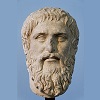12.6: Growth of Towns and Trade
- Page ID
- 1252
Although the eleventh century was in many ways Western Europe’s nadir, it would also see the beginnings of Western Europe’s re-urbanization. One reason for these beginnings was that in those lands that had been part of the Western Roman Empire, city walls often remained, even if these cities had largely emptied of people. During the chaos and mayhem of the tenth and eleventh centuries, people often gathered in walled settlements for protection. Many of these old walled cities thus came to be re-occupied.
Another reason for the growth of towns came with a revival of trade in the eleventh century. This revival of trade can be traced to several causes. In the first place, Europe’s knights, as a warrior aristocracy, had a strong demand for luxury goods, both locally manufactured products and imported goods such as silks and spices from Asia. Bishops, the great lords of the Church, had a similar demand. As such, markets grew up in the vicinity of castles and thus caused the formation of towns that served as market centers, while cathedral cities also saw a growth of population. Moreover, Viking raids had also led to a greater sea-borne trade in the North Sea and Atlantic. Often, Viking-founded markets served as the nucleus of new towns, especially in those lands where the Romans had never established a state and which were not urbanized at all. The Irish city of Dublin, for example, had begun as a Viking trading post.
Further south, in the Mediterranean, frequent raids by pirates (most of whom were Arab Muslims from North Africa) had forced the coastal cities of Italy to build effective navies. One of the chief of these cities was Venice, a city in the swamps and lagoons of northeastern Italy. Over the eleventh century, the city (formerly under Byzantine rule but now independent) had built up a navy that had cleared the Adriatic Sea of pirates and established itself as a nexus of trade between Constantinople and the rest of Western Europe. Likewise, on the western side of Italy, the cities of Genoa and Pisa had both built navies from what had been modest fishing fleets and seized the strongholds of Muslim pirates in the islands of Corsica and Sardinia. This clearing of pirates from the Mediterranean led to an increase in maritime trade and allowed the renewed growth of the old Roman towns that had in many cases remained since the fall of the Western Empire. The cities of Genoa and Venice were able to prosper because they stood at the northernmost points of the Mediterranean, the farthest that goods could be moved by water (always cheaper than overland transport in premodern times) before going over land to points further north.
.png?revision=1)
As goods moved north and south between the trade zones of the North Sea and the Mediterranean, nobles along that north-south route realized that they could enrich themselves by taxing markets. They thus sponsored and protected markets in regions of West Francia like Champagne, which themselves would serve as centers of urbanization and economic activity.
The people living and working in towns came to be known as the bourgeois, or middle class. These were called a middle class because they were neither peasant farmers nor nobles, but rather a social rank between the two. Kings and other nobles would frequently give towns the right to self-government, often in exchange for a hefty payment. A self-governing town was often known as a commune.


